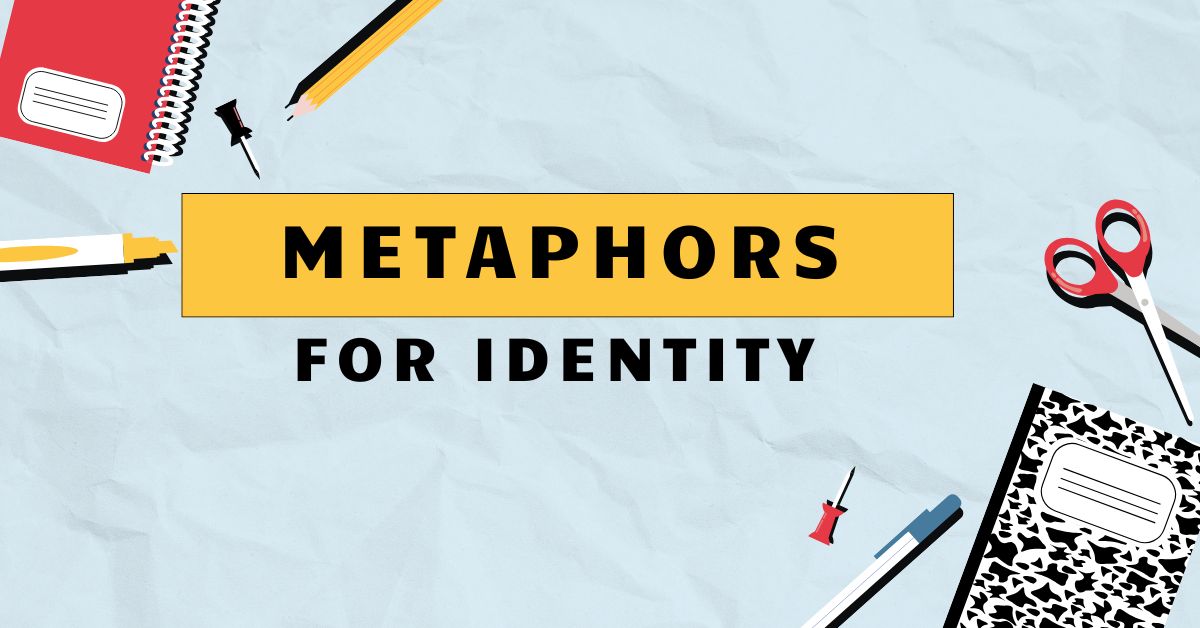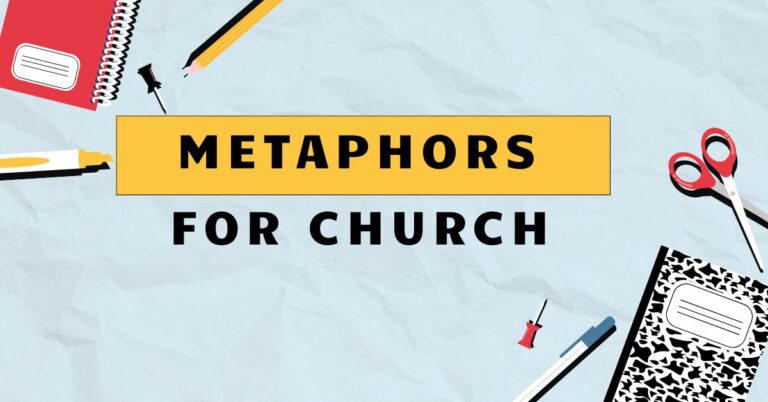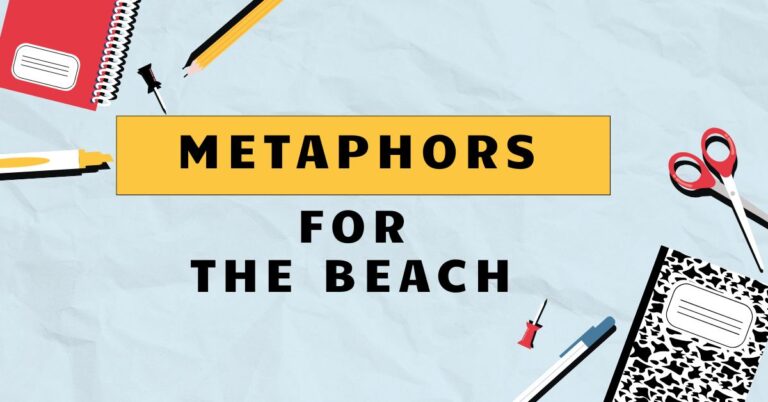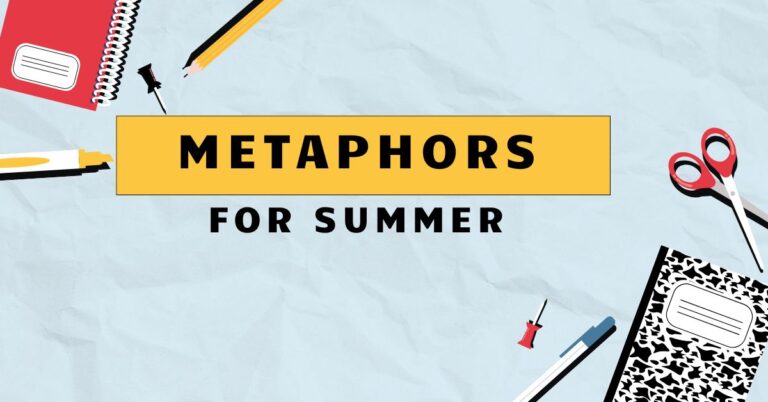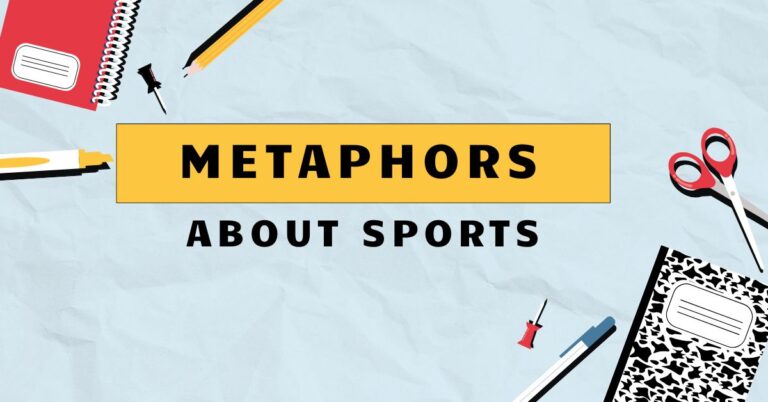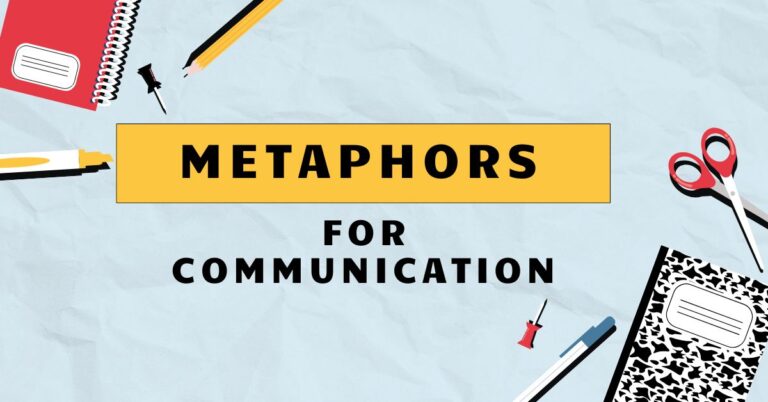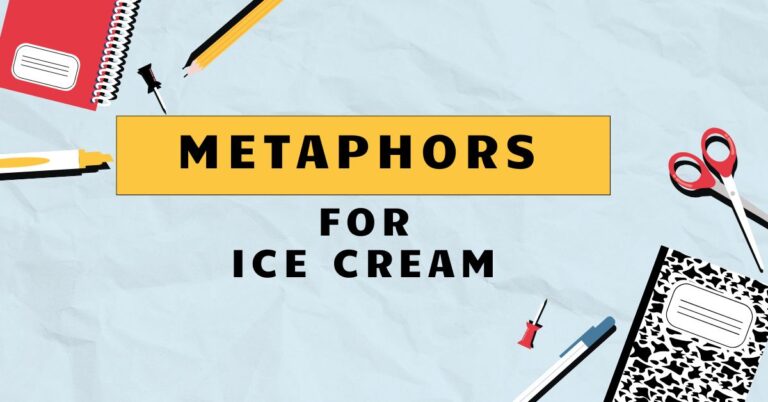47 Metaphors for Identity: Exploring Figurative Language
Understanding how metaphors shape our perception of identity is crucial for mastering English grammar and rhetoric. Metaphors aren’t just literary devices; they are fundamental to how we conceptualize abstract ideas like identity.
This article delves into the various ways metaphors are used to express and understand personal and collective identities. Whether you’re an English language learner, a student of literature, or simply interested in the power of language, this guide will provide you with a comprehensive overview of metaphors for identity.
Table of Contents
- Introduction
- Definition of Metaphor for Identity
- Structural Breakdown
- Types or Categories of Identity Metaphors
- Examples of Metaphors for Identity
- Usage Rules for Metaphors of Identity
- Common Mistakes
- Practice Exercises
- Advanced Topics
- FAQ
- Conclusion
Definition of Metaphor for Identity
A metaphor for identity is a figure of speech that describes a person, group, or concept of self in terms of something else, suggesting a likeness or analogy without using “like” or “as.” These metaphors are not literal; instead, they offer a new way of understanding identity by drawing on the characteristics of the compared subject. They allow us to conceptualize the abstract notion of identity in more concrete and relatable terms.
Metaphors for identity can be powerful tools for self-expression, social commentary, and cultural understanding. They are pervasive in literature, politics, and everyday conversation, shaping how we perceive ourselves and others.
The effectiveness of an identity metaphor lies in its ability to resonate with the audience and provide a fresh perspective on the subject.
The function of these metaphors is multifaceted. They can serve to simplify complex ideas, evoke emotions, create vivid imagery, and persuade audiences.
In the context of identity, metaphors help individuals and groups define themselves, express their values, and assert their place in the world. They can also be used to challenge existing norms and promote social change.
For example, describing a nation as a “melting pot” is a metaphor that suggests a blending of cultures, while describing it as a “salad bowl” implies that cultures retain their distinctiveness within a larger whole.
Metaphors for identity are found in various contexts, including:
- Literature: Authors use metaphors to develop characters, explore themes, and create symbolic meaning.
- Politics: Politicians employ metaphors to shape public opinion, rally support, and frame issues.
- Everyday Conversation: People use metaphors to express their feelings, describe their experiences, and relate to others.
- Social Movements: Activists use metaphors to raise awareness, mobilize supporters, and challenge the status quo.
- Psychology: Therapists use metaphors to help clients understand their emotions, behaviors, and relationships.
Structural Breakdown
The structure of a metaphor for identity typically involves two key elements: thetenorand thevehicle. Thetenoris the subject being described (e.g., a person’s identity), and thevehicleis the object or concept used to represent the subject (e.g., a tree).
The metaphor works by highlighting the shared characteristics or qualities between the tenor and the vehicle. This shared ground is sometimes referred to as thegroundof the metaphor.
Understanding these elements is crucial for analyzing and interpreting metaphors for identity effectively. The relationship between the tenor and vehicle is not arbitrary; it is based on perceived similarities and associations.
A well-chosen vehicle can illuminate aspects of the tenor that might otherwise remain hidden or obscure.
For example, in the metaphor “He is a rock,” “he” (a person) is the tenor, and “rock” is the vehicle. The ground of the metaphor might be the person’s strength, stability, and resilience.
The metaphor suggests that the person is dependable and unwavering, like a rock. The effectiveness of the metaphor depends on the audience’s understanding of the characteristics associated with rocks.
If the audience perceives rocks as cold and unfeeling, the metaphor might convey a different meaning than intended.
The structural breakdown can be further analyzed by considering theimplicationsandconsequencesof the metaphor. The implications are the additional meanings and associations that are suggested by the metaphor.
The consequences are the effects that the metaphor has on our understanding and perception of the tenor. For example, if we describe a person as a “lion,” the implications might include courage, strength, and leadership.
The consequences might be that we perceive the person as more powerful and assertive than we otherwise would.
Types or Categories of Identity Metaphors
Metaphors can be classified into different types based on their underlying conceptual structure. Three common types of metaphors that are relevant to identity are structural metaphors, orientational metaphors, and ontological metaphors.
Structural Metaphors
Structural metaphorsare those in which one concept is understood and expressed in terms of another, more concrete or familiar concept. They provide a framework for organizing our thoughts and experiences.
For example, the metaphor “Life is a journey” structures our understanding of life in terms of the concept of a journey, with its associated stages, challenges, and destinations. This type of metaphor can shape our goals and aspirations.
In the context of identity, structural metaphors can help us understand how different aspects of our identity are related and how they contribute to our overall sense of self.
Orientational Metaphors
Orientational metaphorsuse spatial relationships to express abstract concepts. These metaphors are often based on our physical experiences and perceptions.
For example, “happy is up” and “sad is down” are common orientational metaphors that reflect our tendency to associate positive emotions with upward movement and negative emotions with downward movement. In the context of identity, orientational metaphors can be used to express feelings of empowerment, marginalization, or belonging.
For instance, someone might say they feel “on top of the world” when they are confident and successful or “down in the dumps” when they are feeling depressed or insecure.
Ontological Metaphors
Ontological metaphorstreat abstract concepts as if they were concrete entities or substances. This allows us to quantify, categorize, and reason about these concepts more easily.
For example, the metaphor “the mind is a container” treats the mind as a physical space that can hold thoughts, ideas, and emotions. In the context of identity, ontological metaphors can be used to define and describe different aspects of our self.
For example, someone might say they are “full of ideas” or “empty inside,” using container metaphors to express their intellectual or emotional state. These metaphors can also be used to objectify or dehumanize individuals or groups, as in the metaphor “they are just a number,” which reduces people to mere statistics.
Examples of Metaphors for Identity
The following tables provide examples of different types of metaphors for identity, illustrating how they are used to express and understand various aspects of self.
Structural Metaphors Examples
The table below illustrates Structural Metaphors, detailing the Tenor (the identity aspect being described), the Vehicle (the concept used to describe it), and the Implied Meaning (the interpretation suggested by the metaphor).
| Tenor (Identity Aspect) | Vehicle (Concept) | Implied Meaning |
|---|---|---|
| Life’s Journey | A winding road | Life is full of twists, turns, and unexpected challenges. |
| Personal Growth | Climbing a mountain | Achieving personal goals requires effort, perseverance, and overcoming obstacles. |
| Career Path | A ladder | Success in one’s career involves moving up through the ranks. |
| Identity Formation | Building a house | Constructing one’s identity is a gradual process that requires a solid foundation. |
| Relationships | A garden | Relationships require nurturing, care, and attention to thrive. |
| Emotional State | A storm | Emotions can be overwhelming and destructive. |
| Challenges | A maze | Life challenges can be confusing and disorienting. |
| Opportunities | An open door | Opportunities provide access to new possibilities. |
| Personal Strength | An anchor | Personal strength provides stability and security. |
| Vulnerability | A glass house | One’s vulnerabilities are easily exposed. |
| Cultural Heritage | A tapestry | Cultural heritage is woven together from many different threads. |
| Self-Discovery | Unearthing treasure | Discovering oneself involves effort and patience. |
| Inner Peace | A still lake | Inner peace is calm and serene. |
| Personal Boundaries | A fence | Personal boundaries protect one’s space and well-being. |
| Dreams | A distant star | Dreams are inspiring but often difficult to reach. |
| Education | A key | Education unlocks doors to knowledge and opportunity. |
| Memories | A photo album | Memories preserve important moments in one’s life. |
| Ambitions | A compass | Ambitions provide direction and purpose. |
| Resilience | A rubber band | Resilience allows one to bounce back from adversity. |
| Personal Style | A signature | Personal style is unique and distinctive. |
| Friendship | A bridge | Friendship connects people and helps them cross divides. |
| Love | A flame | Love can be passionate and consuming. |
| Fear | A shadow | Fear follows one and distorts reality. |
| Hope | A light in the darkness | Hope provides comfort and guidance during difficult times. |
| Regret | A weight | Regret burdens one and holds them back. |
Orientational Metaphors Examples
The following table provides examples of orientational metaphors related to identity, showing how spatial relationships are used to express abstract concepts.
| Concept | Spatial Orientation | Implied Meaning |
|---|---|---|
| Happiness | Up | “I’m feeling up today.” (Happy) |
| Sadness | Down | “I’m feeling down in the dumps.” (Sad) |
| High Status | Up | “He’s at the top of his game.” (Successful) |
| Low Status | Down | “She’s at the bottom of the ladder.” (Unsuccessful) |
| Good Health | Up | “His health is on the rise.” (Improving) |
| Poor Health | Down | “Her health is declining.” (Worsening) |
| Feeling Empowered | Up | “I feel on top of the world.” (Confident) |
| Feeling Marginalized | Down | “I feel pushed to the side.” (Ignored) |
| Being in Control | Up | “I have the upper hand.” (Dominant) |
| Lacking Control | Down | “I’m under his thumb.” (Submissive) |
| Understanding | Seeing clearly | “I see the light.” (Understanding) |
| Confusion | Being in the dark | “I’m in the dark about this.” (Uninformed) |
| Optimism | Looking up | “I’m looking up to the future.” (Hopeful) |
| Pessimism | Looking down | “I’m down on my luck.” (Discouraged) |
| Connection | Close | “I feel close to her.” (Connected) |
| Distance | Far | “We’ve grown apart.” (Distant) |
| Progress | Forward | “We’re moving forward.” (Advancing) |
| Regression | Backward | “We’re going backwards.” (Declining) |
| Success | Rising | “She’s a rising star.” (Successful) |
| Failure | Falling | “He’s fallen from grace.” (Unsuccessful) |
| Influence | Above | “He has influence over me.” (Dominant) |
| Subordination | Below | “I’m under his command.” (Submissive) |
| Support | Standing behind | “I stand behind you.” (Supportive) |
| Betrayal | Stabbing in the back | “He stabbed me in the back.” (Betrayed) |
| Advantage | Ahead | “He’s ahead of the game.” (Leading) |
Ontological Metaphors Examples
The table below illustrates ontological metaphors, where abstract concepts are treated as concrete entities or substances, allowing for easier understanding and discussion.
| Abstract Concept | Concrete Entity | Implied Meaning |
|---|---|---|
| The Mind | A container | “My mind is full of ideas.” (Abundant thoughts) |
| Emotions | Objects | “I have a lot of anger bottled up inside.” (Suppressed emotions) |
| Time | A resource | “I’m running out of time.” (Limited time) |
| Arguments | War | “We won the argument.” (Successful debate) |
| Ideas | Food | “That’s food for thought.” (Stimulating idea) |
| Problems | Burdens | “I’m carrying a lot of baggage.” (Emotional burdens) |
| The Self | A possession | “I need to find myself.” (Self-discovery) |
| Life | A game | “Life is a game of chance.” (Unpredictable) |
| Opportunities | Gifts | “An opportunity knocked on my door.” (Unexpected chance) |
| Fear | A monster | “Fear is holding me back.” (Paralyzing fear) |
| Love | A force | “Love conquers all.” (Overpowering emotion) |
| Hate | A poison | “Hate is a corrosive emotion.” (Destructive feeling) |
| Success | A destination | “I’ve reached my goal.” (Achieved success) |
| Failure | A pit | “I’ve fallen into despair.” (Deep disappointment) |
| Knowledge | Light | “She shed light on the subject.” (Illuminated knowledge) |
| Ignorance | Darkness | “I’m in the dark about this.” (Uninformed) |
| Communication | A channel | “The message got through.” (Effective communication) |
| Relationships | Containers | “We’re in a relationship.” (Committed partnership) |
| Societal Norms | Structures | “We need to break down these barriers.” (Challenging norms) |
| Justice | A balance | “Justice must be served.” (Fairness) |
| Truth | A gem | “The truth is a precious thing.” (Valuable) |
| Lies | A web | “He was caught in a web of lies.” (Deception) |
| Wisdom | A treasure | “Wisdom is a valuable asset.” (Enlightenment) |
| Experience | A teacher | “Experience is the best teacher.” (Learning from life) |
| Memory | A record | “I have a vivid memory of that day.” (Recollection) |
Usage Rules for Metaphors of Identity
Using metaphors effectively requires careful consideration of the audience, context, and intended meaning. Here are some rules to follow:
- Clarity: Choose metaphors that are easily understood by your audience. Avoid obscure or overly complex metaphors that may confuse or alienate your readers or listeners.
- Relevance: Ensure that the metaphor is relevant to the subject being described. The connection between the tenor and the vehicle should be clear and logical.
- Consistency: Maintain consistency in your use of metaphors. Avoid mixing metaphors in a way that creates confusion or contradiction.
- Originality: Strive for originality in your choice of metaphors. Avoid clichés and overused expressions that have lost their impact.
- Appropriateness: Consider the appropriateness of the metaphor for the context. Avoid using metaphors that may be offensive or insensitive.
Exceptions and Special Cases:While the above rules provide general guidelines, there are exceptions and special cases to consider. For example, in certain contexts, mixing metaphors can be used deliberately to create a humorous or surreal effect.
Similarly, clichés can be used effectively when they are employed ironically or self-consciously. The key is to be aware of the potential pitfalls and to use metaphors intentionally and purposefully.
Consider the cultural background of your audience. A metaphor that resonates with one culture may not be meaningful or appropriate in another.
Be mindful of cultural differences and sensitivities when using metaphors in cross-cultural communication.
Common Mistakes
One common mistake is using mixed metaphors. This occurs when two or more metaphors are combined in a way that creates a nonsensical or contradictory image.
Incorrect: “We need to nip it in the bud and iron out the wrinkles.”
Correct: “We need to address the problem early to prevent it from escalating.”
Another mistake is using clichéd metaphors. These are overused expressions that have lost their impact and originality.
Incorrect: “He was as strong as an ox.”
Correct: “He possessed remarkable strength and resilience.”
Another common mistake is choosing metaphors that are inappropriate for the context or audience. This can lead to confusion or offense.
Incorrect: Describing a sensitive situation with a lighthearted metaphor.
Correct: Using a respectful and empathetic tone.
Failing to fully develop the metaphor is another common error. A metaphor should be explored enough to allow the reader to grasp its significance and relevance.
Incorrect: An underdeveloped and vague comparison.
Correct: A fully explored and clearly explained comparison.
Practice Exercises
Test your understanding of metaphors for identity with these exercises.
Exercise 1: Identifying Metaphors
Identify the metaphors in the following sentences and explain their implied meanings.
| Question | Answer |
|---|---|
| 1. Her heart was a frozen wasteland after the breakup. | Metaphor: Heart as a frozen wasteland. Implied meaning: She felt emotionally numb and isolated. |
| 2. He is a shining star in the world of academia. | Metaphor: He is a shining star. Implied meaning: He is exceptionally talented and successful. |
| 3. The company is a well-oiled machine. | Metaphor: Company as a well-oiled machine. Implied meaning: The company operates efficiently and smoothly. |
| 4. Life is a rollercoaster of ups and downs. | Metaphor: Life as a rollercoaster. Implied meaning: Life is full of exciting and challenging experiences. |
| 5. She is a breath of fresh air in this stale environment. | Metaphor: She is a breath of fresh air. Implied meaning: She brings new energy and ideas. |
| 6. He is a pillar of the community. | Metaphor: He is a pillar. Implied meaning: He provides essential support and stability. |
| 7. The truth is a double-edged sword. | Metaphor: The truth is a double-edged sword. Implied meaning: The truth can be both beneficial and harmful. |
| 8. Her words were daggers that pierced his heart. | Metaphor: Her words were daggers. Implied meaning: Her words caused him great emotional pain. |
| 9. He is a diamond in the rough. | Metaphor: He is a diamond in the rough. Implied meaning: He has great potential but needs development. |
| 10. The city is a concrete jungle. | Metaphor: The city is a concrete jungle. Implied meaning: The city is harsh and impersonal. |
Exercise 2: Creating Metaphors
Create your own metaphors to describe the following concepts.
| Concept | Your Metaphor |
|---|---|
| Friendship | A warm fire on a cold night. |
| Love | A blossoming flower. |
| Fear | A dark shadow looming. |
| Hope | A tiny spark in the darkness. |
| Regret | A heavy chain dragging behind. |
| Ambition | A guiding star. |
| Resilience | A willow tree bending in the wind. |
| Creativity | A flowing river. |
| Inspiration | A sudden burst of light. |
| Change | A butterfly emerging from a cocoon. |
Exercise 3: Correcting Mixed Metaphors
Rewrite the following sentences to correct the mixed metaphors.
| Question | Answer |
|---|---|
| 1. We need to grab the bull by the horns and nip it in the bud. | We need to confront the challenge directly and address it early. |
| 2. He was skating on thin ice, but he managed to stay afloat. | He was in a precarious situation, but he managed to avoid trouble. |
| 3. She was a diamond in the rough, but she needed to find her footing. | She had great potential, but she needed to develop her skills. |
| 4. He was burning the candle at both ends, but he kept his eye on the ball. | He was working excessively, but he remained focused on his goal. |
| 5. The project was a rollercoaster ride, but we managed to stay on track. | The project was full of unexpected challenges, but we managed to stay focused. |
Advanced Topics
For advanced learners, exploring the philosophical implications of identity metaphors can be enriching. Consider how different metaphors reflect underlying assumptions about the nature of self.
For instance, the metaphor “identity is a mask” suggests that our outward persona is a facade that conceals our true self, while the metaphor “identity is a journey” implies that our sense of self is constantly evolving and developing. Analyzing these underlying assumptions can provide deeper insights into the complexities of human identity.
Delving into the historical and cultural contexts of these metaphors can also add another layer of understanding. The metaphors we use to describe identity are not static; they change over time and vary across cultures, reflecting shifting social norms and values.
Another advanced topic is the use of metaphors in political discourse. Politicians often use metaphors to shape public opinion, mobilize support, and frame issues in a way that benefits their agenda.
Analyzing these metaphors critically can reveal the underlying biases and assumptions that inform political rhetoric. For example, the metaphor “the nation is a family” can be used to promote a sense of unity and solidarity, but it can also be used to exclude certain groups or individuals who are not considered part of the “family.” Understanding how metaphors are used in political discourse is essential for informed citizenship and critical thinking.
Exploring the use of metaphors in psychotherapy can also be beneficial. Therapists often use metaphors to help clients understand their emotions, behaviors, and relationships.
For example, a therapist might use the metaphor “your anger is a fire” to help a client explore the intensity and destructiveness of their anger. By working with metaphors, clients can gain new insights into their inner world and develop more effective coping strategies.
The effectiveness of metaphor therapy depends on the therapist’s ability to choose metaphors that resonate with the client and to guide the client in exploring the meanings and implications of those metaphors.
FAQ
Q1: What is the difference between a metaphor and a simile?
A:Both metaphors and similes are figures of speech that compare two unlike things. The key difference is that a simile uses the words “like” or “as” to make the comparison explicit, while a metaphor implies the comparison without using these words.
For example, “He is like a lion” is a simile, while “He is a lion” is a metaphor.
Q2: Why are metaphors important in language?
A:Metaphors are important because they allow us to understand and express abstract concepts in more concrete and relatable terms. They can also evoke emotions, create vivid imagery, and persuade audiences.
Metaphors enrich our language and make it more expressive and meaningful.
Q3: How can I improve my use of metaphors?
A:To improve your use of metaphors, practice identifying and analyzing metaphors in literature, speeches, and everyday conversation. Pay attention to the connections between the tenor and the vehicle, and consider the implied meanings and consequences of the metaphor.
Also, experiment with creating your own metaphors and seek feedback from others.
Q4: What are some common metaphors for identity?
A: Some common metaphors for identity include “identity is a journey,” “identity is a mask,” “identity is a tapestry,” and “identity is a building.” Each of these metaphors offers a different perspective on the nature of self.
Q5: How can metaphors be used to promote social change?
A: Metaphors can be used to promote social change by challenging existing norms, raising awareness, and mobilizing supporters. For example, the metaphor “the glass ceiling” has been used to describe the barriers that prevent women from advancing in their careers, helping to raise awareness of gender inequality.
Q6: Can metaphors be harmful?
A:Yes, metaphors can be harmful if they are used to objectify, dehumanize, or stereotype individuals or groups. For example, the metaphor “they are just a number” can be used to reduce people to mere statistics, ignoring their individual identities and experiences.
It is important to use metaphors responsibly and ethically.
Q7: How do cultural differences affect the interpretation of metaphors?
A:Cultural differences can significantly affect the interpretation of metaphors. A metaphor that resonates with one culture may not be meaningful or appropriate in another.
It is important to be mindful of cultural differences and sensitivities when using metaphors in cross-cultural communication.
Q8: What is the role of context in understanding metaphors?
A:Context is crucial for understanding metaphors. The meaning of a metaphor can vary depending on the context in which it is used.
Consider the speaker, the audience, the situation, and the overall message when interpreting a metaphor.
Q9: How can I avoid using clichéd metaphors?
A:To avoid using clichéd metaphors, try to think creatively and come up with original expressions. Look for fresh and unexpected connections between the tenor and the vehicle.
Also, be aware of common clichés and avoid using them unless you are doing so intentionally for a specific effect.
Q10: What are the key elements to consider when analyzing a metaphor?
A: When analyzing a metaphor, consider the tenor (the subject being described), the vehicle (the object or concept used to represent the subject), the ground (the shared characteristics or qualities between the tenor and the vehicle), the implications (the additional meanings and associations that are suggested by the metaphor), and the consequences (the effects that the metaphor has on our understanding and perception of the tenor).
Conclusion
Metaphors for identity are powerful tools for understanding and expressing the complex nature of self. They allow us to conceptualize abstract ideas in concrete terms, evoke emotions, and create vivid imagery.
By understanding the structure, types, and usage rules of identity metaphors, we can become more effective communicators and critical thinkers. Remember to choose metaphors that are clear, relevant, consistent, original, and appropriate for the context and audience.
Be mindful of cultural differences and avoid using metaphors that may be harmful or insensitive.
Mastering the use of metaphors for identity can enhance your writing, speaking, and overall communication skills. It can also deepen your understanding of yourself and others.
Continue to practice identifying, analyzing, and creating metaphors, and explore the philosophical and cultural implications of these powerful figures of speech. By doing so, you will unlock new dimensions of meaning and expression in your language and thought.
Embrace the power of metaphor to illuminate the complexities of identity and to connect with others on a deeper level.

